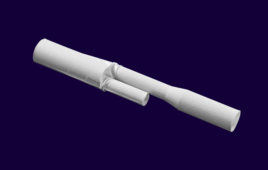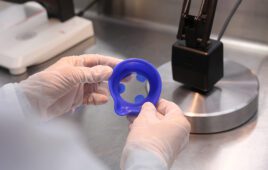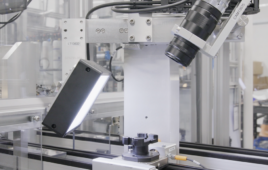
By Del R. Lawson, Ph.D
Manufacturing can present a variety of challenges when developing a medical device – some can be easy to detect, while others are more covert. Manufacturing can have an impact on other stages of the product development process, from selecting a sterilization method to choosing the right materials. There are considerations to think about prior to kick-off to set your project up for future success.
The sooner you start thinking about manufacturing’s potential implications, the more robust your device design will be. Manufacturing enters the discussion once a device idea is considered, especially when creating a functional prototype.
The correct time to involve manufacturing depends on device complexity. Original design changes are inevitable during different product development phases. Subsequent manufacturing challenges rely on your team’s ability to balance considerations posed by device design, material choice and production process.
Remember the device requirements including look and function; which will influence final product specifications. Requirements are set by the product’s end-use, and often, cannot be changed. They will help determine the capability of your process and, ultimately, select the best manufacturing process.
To help you navigate through these challenges, we have compiled our knowledge from working with design engineers and device manufacturers around the world into a guide – “A design engineer’s guide to manufacturing challenges: Finding balance between design, material & production.”
With this guide, you will learn:
- How manufacturing influences the entire product development process
- An array of manufacturing and material challenges your fellow design engineers have experienced
- Tips to help you mitigate these challenges and find balance in your design
We hope you can learn from the obstacles others in the industry have experienced and apply this to your next project.
Get the guide Del R. Lawson, Ph.D received his BS in Chemistry from California State University at Fresno, and his PhD in Chemistry from Texas A&M University. Dr. Lawson has over 25 years of experience at 3M in laboratory management, strategic product platform creation, and Lean Six Sigma operations. His experience has involved new technology creation in advanced analytics and sensors, biotechnology solutions, and medical adhesives. Dr. Lawson currently leads new product development and commercialization efforts in 3M’s Medical Solutions Division.
Del R. Lawson, Ph.D received his BS in Chemistry from California State University at Fresno, and his PhD in Chemistry from Texas A&M University. Dr. Lawson has over 25 years of experience at 3M in laboratory management, strategic product platform creation, and Lean Six Sigma operations. His experience has involved new technology creation in advanced analytics and sensors, biotechnology solutions, and medical adhesives. Dr. Lawson currently leads new product development and commercialization efforts in 3M’s Medical Solutions Division.

Sponsored content by 3M




